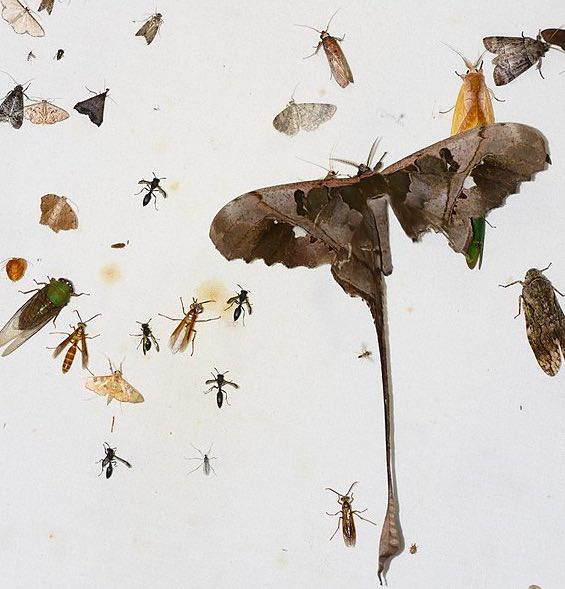
By Dave Lindorff
This past Thursday evening, not having done my usual run because of the heat, I waited until later when things had cooled down a bit. It was still quite humid and even faintly misty and not wanting to get all sweaty I opted to walk the four mile circle through the exurb north of Philadelphia where we live.
It was totally quiet as I walked the paved streets past the houses on one-acre lots with their neatly mowed lawns and sculpted flower patches.
At first I enjoyed the peaceful stillness of the windless evening and the lack of traffic or even other walkers, but then it dawned on me what made it seem to uniquely calm. As I passed streetlight after streetlight, I realized there was not a moth, beetle or other miscellaneous bug flying around any of the lights.
Over the course of four miles, I passed only two streetlights that had one flying insect each — both small moths.
Not surprisingly, there wasn’t a bat to be seen, though in prior years these amazing flying mammals wih their natural echo-locating sonar could be observed through such evenings in summer darting around and snatching up mosquitos, flies, beetles and moths.
I know that populations of the brown bats that were common in the northeastern US were sharply reduced by the white-nose fungus which was killing them while they hibernated through the winter. But they had seemed to be recovering from that epidemic, probably by developing immunity to the pathogen. Now, it was clear to me, the problem is simply starvation. With no bugs flying around in the evening, the bats have nothing to eat to support their rapid metabolisms.
Given all the violent and terrifying drama of this year’s examples of raging climate-emergency caused events, from unprecedented deadly storm flooding in western Europe to unprecedented heatwaves in both the western US and the Arctic from eastern Siberia across Alaska and northern Canada, as well as in Scandinavia, this story might seem a little “soft.”
That would be a mistake though. The absence of insects, or their dramatic decline, even in the daytime, is not just a massive canary in the ecological coal mine, but is a major environmental disaster.
It explains the paucity of birds which I’ve noted before. When, a little over two decades ago, we moved to our home here in southeastern Pennsylvania from Hong Kong, buying a colonial-era stone house on a wooded 2.3 acres that includes a vernal pond and lots of scrub brush, it was a different world. We had everything from cardinals, scarlet tanagers, shrikes, meadowlarks, starlings, chickadees, and goldfinches to sparrows, woodpeckers, nuthatches, hummingbirds, bluejays, robins, catbirds, cuckoos, crows, wrens, grackles, several varieties of hawks and owls, mourning doves and other birds as well a plenty of bats. There was a symphony of birdsong in the mornings, and plenty also through the day, as well as some at night, and of course loads of bats. Now I only see crows, a few bluejays and robins, an occasional wren or cardinal, and that’s about it…
For the rest of this article by DAVE LINDORFF in ThisCantBeHappening!, the uncompromised, collectively run, six-time Project Censored Award-winning online alternative news site, please go to: https://thiscantbehappening.net/a-nighttime-walk-without-bugs-or-bats/

